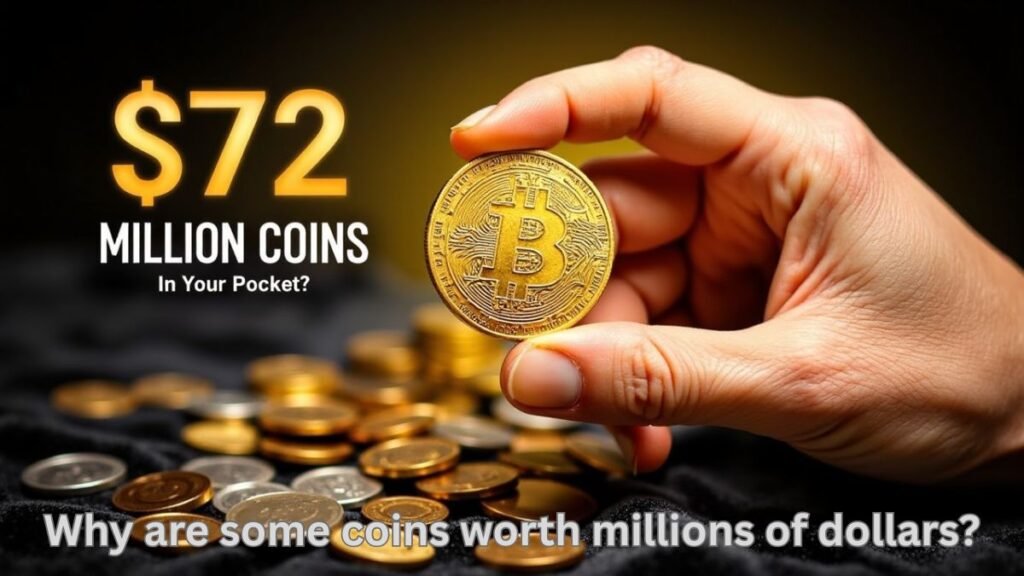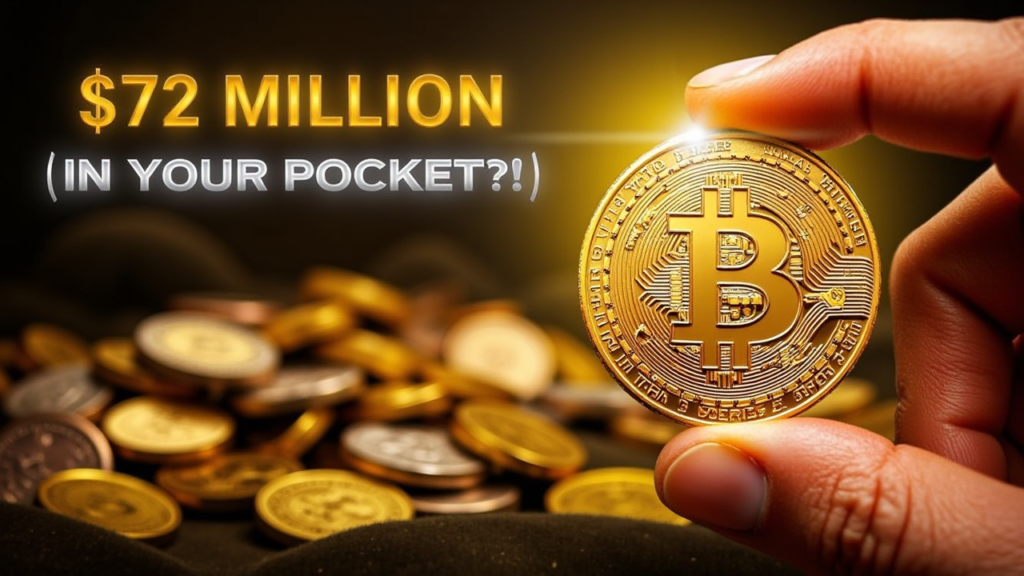Did you ever consider that a coin in your pocket can turn you into a millionaire? It sounds thin, but the truth is that some coins still in circulation today have sold for millions of dollars at auction. Ancient history, minor minting errors or coins produced in small quantities—there are numerous reasons why these coins are priceless.
In this article, we will discuss those unique coins that are still in circulation but whose combined worth has been calculated to be over $72 million. Along with this, we will understand why they are so precious, how to determine whether you possess a rare coin or not, and if you do, how to preserve it and sell it the proper way.
Why are some coins worth millions of dollars?

There are numerous reasons for every coin to be worth something—its scarcity, historical significance, minting error in it, and its fine condition. Let’s explore these points step by step.
1. Rarity
A coin’s worth is mostly based on how scarce it is. There are, for instance, only five worlds in existence for the 1913 Liberty Head Nickel, and one of them has been worth over $4 million. Coins stamped out in such tiny quantities are nuggets for collectors.
2. Historical significance
There are some coins that are specifically connected to a historical event or era, making them more significant. Like gold coins from the California Gold Rush or special coins minted during times of war. These coins are not only meant for collection but also as a means of tapping into history.
3. Minting error
Occasionally, a mint makes mistakes and strikes coins that are not like other coins—like double-strike quarters or dateless coins. This type of mistake renders the coin a “one-of-a-kind,” both boosting its demand and its worth.
4. Condition
If a coin is “uncirculated,” i.e., it has never been in circulation and is fresh, then its grade is MS65 or higher. The value of such coins goes up multiple times. Indeed, if you keep your coin in safety with proper care, then even after many years, it will be in the same condition.
These are those particular coins whose combined value is over $72 million with no punctuation.
Now let’s discuss those very special coins still in circulation somewhere, but you will be surprised to know how much their price is.
1. 1913 Liberty Head Nickel – $4 million+
There are just 5 of them in the world and each is worth over $4 million. It was minted secretly by an individual in the mint and now it is among the most valuable coins. It bears Liberty’s face on the obverse and the Roman numeral “V” on the reverse.
2. 2008 Undated 20p Coin (UK) – Up to $150
This is a British coin but due to its error and rarity, it is special. It doesn’t have any date printed on it, hence making it a “mule error coin.” Approximately 2.5 lakh coins of this sort were produced in error.
3. 1976 Bicentennial Double-Strike Quarter – Up to $6,000
If this quarter made to honor America’s bicentennial, its 200th anniversary, is inadvertently double-strike, then it becomes worth up to $6,000. Notice that the design of the drummer boy in it is doubled overlapped.
4. 1943 Copper Penny – Up to $1.7 million
Most pennies in 1943 were steel because there was a copper shortage. But some coins were accidentally produced in copper. If you have a 1943 copper penny that does not stick to a magnet, it might be worth up to $1.7 million.
5. 2004 Wisconsin Extra Leaf Quarter – Up to $7,000
This quarter had an additional leaf incorrectly added to the corn leaf design. These quarters are worth as much as $7,000 today. There are slight variations, so you have to observe well.
How to know if you have a rare coin
If you suspect you may have one of these coins, do the following:
1. Check for a mint error
Examine the coin closely under good light or with a hand lens. Check for:
- Double strikes
- Off-center designs
- An incorrect date or the wrong metal
2. Check the date
- Coins from certain years are more valuable—like 1913, 1943, 1976, etc. Coins with errors made in these years are worth a lot more.
3. Look for the mint mark
- A small letter on a coin indicates which mint it was made by. Coins made by certain mints, like Carson City (CC), are rarer. So pay attention to the mint mark.
4. Authenticate the metal
- At times, the actual worth of a coin is the metal it is made of—copper, silver, or gold. For instance, the 1943 copper penny sold for so much money just because of its metal value.
5. Obtain professional grading
- You can have your coin graded by a recognized agency such as PCGS or NGC. They will authenticate it with a certificate, which will make it more authentic in the market.
How to take care of coins?

It is necessary to maintain valuable coins in a good condition. Here are some tips:
- Keep in plastic holders or capsules so that they do not get scratched.
- Do not clean coins. The shine and patina on old coins is their beauty.
- Keep in a cool, dry place so that they don’t get harmed by moisture.
If you want to sell, where to sell?
If you believe you have a rare coin, try these options:
1. Auction Houses
- Rare coins have a high demand on sites like Heritage Auctions. There are genuine collectors present who will offer the correct price.
2. Coin Dealers
- Go to local experienced and certified coin dealers. They will also assess and provide the correct counsel.
3. Online Platforms
- You can even sell coins through marketplaces such as eBay. But remember, for valuable coins, you will require authentication.
Conclusion
Just think about it—a plain quarter or penny that is just floating around in your pocket can bring you millions of dollars. Coins are as fascinating as they can be lucrative if you know where to look and what to look for. So the next time you receive a coin in your hand, look closely at it—who knows, you might be the next one to have a $1.7 million copper penny sitting in his piggy bank.
FAQ’s
Q. How can I determine the value of a coin?
A. Coins having minting errors, rare dates, unusual designs, and great condition are mostly those which could be valued a lot.
Q. Do you still find rare coins lying around in the regular world?
A. Yes, some rare and precious coins still circulate and can be found in pocket change.
Q. What makes a coin worth millions?
A. A coin’s value can range from a couple dollars to millions based on its rarity, historical significance, minting errors, and an excellent or pristine condition.
Q. Where is the place to get my coin appraised or graded?
A. You can contact professional grading companies such as PCGS or NGC for their official grading and certification.
Q. How do I store rare coins properly?
A. They should be held in holders or capsules for coins, away from moisture and direct contact.










